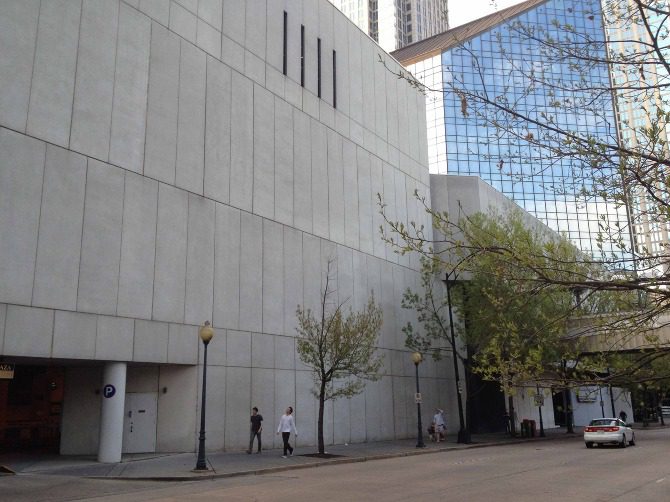Turn uptown’s street canyons green

Green walls in downtown Charlotte?
Almost any visitor to the Charlotte area will remark about one key feature that I think all of us who live here are proud of – how green the area is. But if you’ve lived here any length of time you’re also probably aware that the greenery – particularly our tree cover – has diminished over the years.
There are many reasons why we should work to reverse that trend: For one I’m sure the Charlotte Chamber points to our trees as a key selling point to people and companies considering moving to the city. For those of us already here, it simply looks nice. Admit it. Trees and other greenery are prettier than concrete.
| Related article: The great walls of Charlotte |
Yet while our greenery has been a key selling point for the area, the quality of our air leaves something to be desired. We need air that doesn’t exacerbate health problems. The air in our region has been improving in recent years but still needs work. The 2012 Mecklenburg County State of the Environment Report says the two main contributors to the overall Air Quality Index are particulate matter (PM) and ozone, two key components of what we call smog.
Both come primarily from mobile sources – our vehicles. For many years Mecklenburg County didn’t meet the national standards mandated for either pollutant, but it’s now in compliance with the particulate matter standard – but just barely. The county still doesn’t meet the ozone standard. The report recommends continuing to comply with the federal standards (I would hope so), but the only clear and tangible recommendation is to reduce vehicle miles traveled – much easier to recommend than to accomplish.
The report recommends continuing to comply with the federal standards (I would hope so), but the only clear and tangible recommendation is to reduce vehicle miles traveled – much easier to recommend than to accomplish.
So what does this have to do with our greenery and tree cover? Reducing vehicle miles traveled is a highly laudable goal and one I would love to see happen for a number of “quality of life” reasons. However, there’s no reason progress on cleaner air should hinge on just one recommendation. There’s a complimentary tack we can take that can result in a win-win for our area.
A recent study published in the Environmental Science & Technology journal gives another important reason to not just protect our greenery but enhance it, and with more than just trees. Increasing greenery can help reduce those air pollutants. The study found that shrubs, ivy and other plants can significantly help filter street-level concentrations of both particulate matter and nitrogen dioxide (NO2), which is a key ingredient of ozone.
It’s old news that trees and other plants help reduce air pollutants, but the effect was thought to be fairly small, reducing those pollutants only about 5 percent. This new study looked specifically at “street canyons,” areas with tall buildings and poor air circulation. The unique characteristics of this urban environment means unique approaches to greenery can have much more of a positive effect than previously thought – reducing pollutants by as much as 40 to 60 percent.
Imagine ivy climbing up the sides of the Bank of America tower. Can ivy even climb that high? Can it “stick” to the sides of all the glass and metal exteriors that make up most of the buildings in uptown Charlotte? OK, so it may remind you of a scene from the movie Logan’s Run (those under 45 may need to look it up). The study’s authors refer to specially designed green walls and vertical canopies. But the bottom line of the study is that grass, ferns, ivy and other types of green “walls” along those street canyons can significantly reduce street-level pollution. There are other key benefits to increased greenery: The vegetation can help reduce the heat island effect and cool the area (and reduce energy usage), lessen stormwater runoff and help reduce greenhouse gases. So we get not just win-wins but win-win-win-wins and more wins.
One caveat to the study is that the use of trees in these street canyons can have either a negative or positive effect, depending on the pollution level, size and species of tree and so forth. So although many of us automatically say, “Plant more trees,” at least in the street canyon environment that may not be the best approach.
Although the focus on street canyons makes the study more relevant for cities such as London and New York, Charlotte is probably large enough now, and tall enough, to benefit as well. So if you can’t imagine one of the bank towers covered in ivy, perhaps just the bottom 10 floors or maybe a “billboard” covered in greenery? I like the idea.
The opinions in this article are the author’s and not necessarily those of the UNC Charlotte Urban Institute or the University of North Carolina at Charlotte.
Tracey Crowe is the clean energy ministerial secretariat for the U.S. Department of Energy. She can be reached at traceycrowe@gmail.com.
(Photo of Semiahmoo Library living wall: © www.greenovergrey.com)
Tracey Crowe